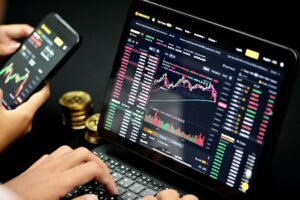Identifying the Best Fundamental Forex Indicators for Trading
When it comes to forex trading, there are two main types of analysis that traders utilize to make informed decisions: technical analysis and fundamental analysis. While technical analysis focuses on charts, patterns, and market data, fundamental analysis takes into account economic and political factors that can influence currency values.
Fundamental indicators play a crucial role in determining the strength and direction of a currency. These indicators provide traders with valuable insights into the underlying economic conditions of a country, helping them anticipate future price movements. In this article, we will explore some of the best fundamental forex indicators that traders can use to enhance their trading strategies.
1. Interest Rates:
Interest rates are one of the most important fundamental indicators that traders should pay attention to. Central banks and monetary authorities use interest rates to control inflation and stimulate economic growth. When interest rates are low, borrowing becomes cheaper, encouraging spending and investment, which can lead to currency appreciation. On the other hand, higher interest rates can attract foreign investment and strengthen a currency.
2. GDP (Gross Domestic Product):
GDP is a measure of a country’s economic performance and is considered a key fundamental indicator. It represents the total value of all goods and services produced within a country’s borders. A strong GDP growth indicates a healthy economy, which can lead to currency strength. Traders should monitor GDP reports to identify potential trading opportunities.
3. Inflation:
Inflation measures the rate at which the general level of prices for goods and services is rising and, consequently, the purchasing power of a currency is falling. Central banks aim to maintain a stable inflation rate within a specific target range. High inflation can erode the value of a currency, while low inflation can support currency appreciation. Traders should keep an eye on inflation reports and central bank statements for hints about future monetary policy decisions.
4. Unemployment Rates:
Unemployment rates provide insights into the overall health of an economy. A low unemployment rate indicates a strong labor market and can lead to increased consumer spending and economic growth. This, in turn, can strengthen the currency. Conversely, high unemployment rates can weaken a currency as it suggests a struggling economy. Traders should analyze unemployment data to gauge the strength of a currency.
5. Retail Sales:
Retail sales data provides information about consumer spending patterns, which is a crucial component of economic growth. Strong retail sales indicate increased consumer confidence and economic stability, potentially leading to currency appreciation. Conversely, weak retail sales may signal a slowdown in economic activity and weaken a currency. Traders should monitor retail sales reports, especially during key shopping seasons, to identify potential trading opportunities.
6. Trade Balance:
The trade balance reflects the difference between a country’s exports and imports. A positive trade balance, also known as a trade surplus, occurs when a country exports more than it imports. This can strengthen the currency as it indicates a competitive and robust export sector. Conversely, a negative trade balance, or trade deficit, can weaken the currency as it suggests an imbalance in trade. Traders should analyze trade balance reports to assess the impact on currency values.
In conclusion, fundamental forex indicators are essential tools for traders looking to make informed decisions in the forex market. By monitoring interest rates, GDP, inflation, unemployment rates, retail sales, and trade balance, traders can gain valuable insights into the underlying economic conditions and anticipate currency movements. It is important to stay updated with economic news and reports to identify potential trading opportunities based on these indicators. Remember, a combination of technical and fundamental analysis can provide a comprehensive understanding of the forex market and enhance trading strategies.





